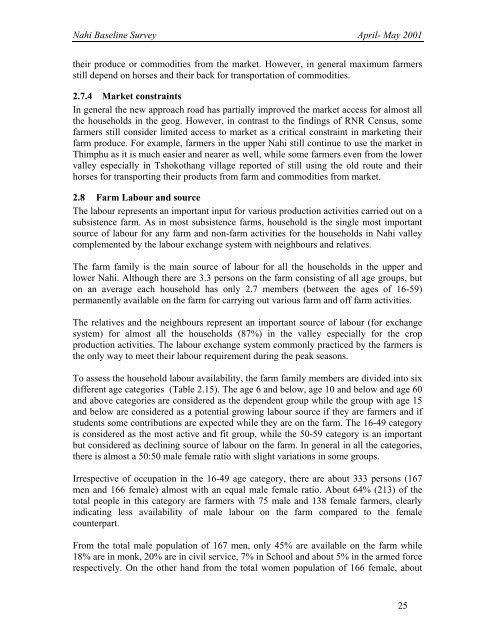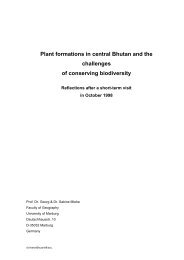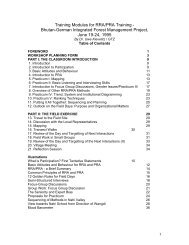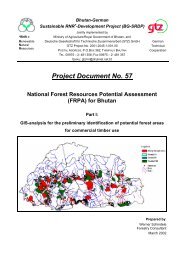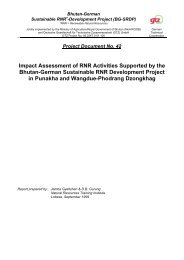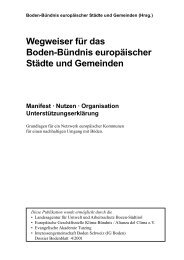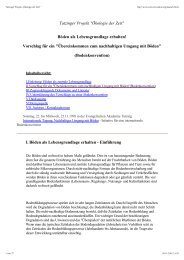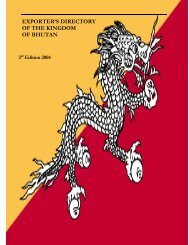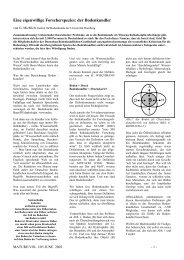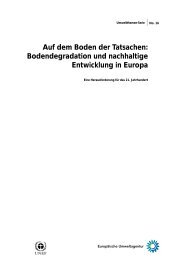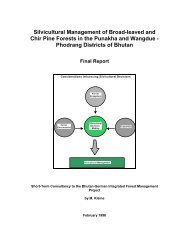GTZ Project Document No. 51 Report on Nahi Baseline Survey
GTZ Project Document No. 51 Report on Nahi Baseline Survey
GTZ Project Document No. 51 Report on Nahi Baseline Survey
You also want an ePaper? Increase the reach of your titles
YUMPU automatically turns print PDFs into web optimized ePapers that Google loves.
<strong>Nahi</strong> <strong>Baseline</strong> <strong>Survey</strong> April- May 2001their produce or commodities from the market. However, in general maximum farmersstill depend <strong>on</strong> horses and their back for transportati<strong>on</strong> of commodities.2.7.4 Market c<strong>on</strong>straintsIn general the new approach road has partially improved the market access for almost allthe households in the geog. However, in c<strong>on</strong>trast to the findings of RNR Census, somefarmers still c<strong>on</strong>sider limited access to market as a critical c<strong>on</strong>straint in marketing theirfarm produce. For example, farmers in the upper <strong>Nahi</strong> still c<strong>on</strong>tinue to use the market inThimphu as it is much easier and nearer as well, while some farmers even from the lowervalley especially in Tshokothang village reported of still using the old route and theirhorses for transporting their products from farm and commodities from market.2.8 Farm Labour and sourceThe labour represents an important input for various producti<strong>on</strong> activities carried out <strong>on</strong> asubsistence farm. As in most subsistence farms, household is the single most importantsource of labour for any farm and n<strong>on</strong>-farm activities for the households in <strong>Nahi</strong> valleycomplemented by the labour exchange system with neighbours and relatives.The farm family is the main source of labour for all the households in the upper andlower <strong>Nahi</strong>. Although there are 3.3 pers<strong>on</strong>s <strong>on</strong> the farm c<strong>on</strong>sisting of all age groups, but<strong>on</strong> an average each household has <strong>on</strong>ly 2.7 members (between the ages of 16-59)permanently available <strong>on</strong> the farm for carrying out various farm and off farm activities.The relatives and the neighbours represent an important source of labour (for exchangesystem) for almost all the households (87%) in the valley especially for the cropproducti<strong>on</strong> activities. The labour exchange system comm<strong>on</strong>ly practiced by the farmers isthe <strong>on</strong>ly way to meet their labour requirement during the peak seas<strong>on</strong>s.To assess the household labour availability, the farm family members are divided into sixdifferent age categories (Table 2.15). The age 6 and below, age 10 and below and age 60and above categories are c<strong>on</strong>sidered as the dependent group while the group with age 15and below are c<strong>on</strong>sidered as a potential growing labour source if they are farmers and ifstudents some c<strong>on</strong>tributi<strong>on</strong>s are expected while they are <strong>on</strong> the farm. The 16-49 categoryis c<strong>on</strong>sidered as the most active and fit group, while the 50-59 category is an importantbut c<strong>on</strong>sidered as declining source of labour <strong>on</strong> the farm. In general in all the categories,there is almost a 50:50 male female ratio with slight variati<strong>on</strong>s in some groups.Irrespective of occupati<strong>on</strong> in the 16-49 age category, there are about 333 pers<strong>on</strong>s (167men and 166 female) almost with an equal male female ratio. About 64% (213) of thetotal people in this category are farmers with 75 male and 138 female farmers, clearlyindicating less availability of male labour <strong>on</strong> the farm compared to the femalecounterpart.From the total male populati<strong>on</strong> of 167 men, <strong>on</strong>ly 45% are available <strong>on</strong> the farm while18% are in m<strong>on</strong>k, 20% are in civil service, 7% in School and about 5% in the armed forcerespectively. On the other hand from the total women populati<strong>on</strong> of 166 female, about25


